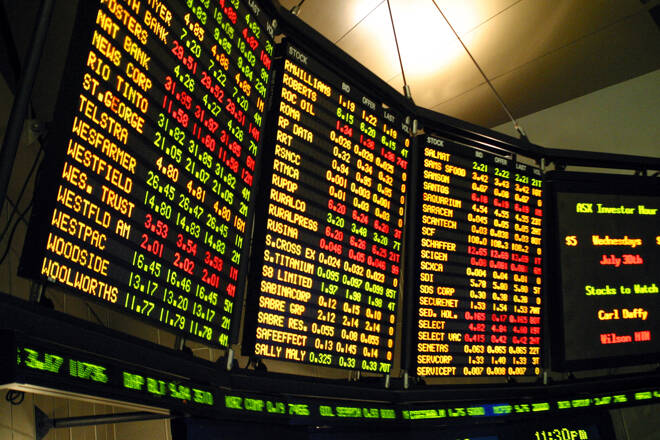Advertisement
Advertisement
Monthly Market Review
By:
The new decade opened with a good mood in the financial markets, thanks to the great performance in 2019.
Only at the end of the first month of the year, the volatility has picked up due to the concerns about the coronavirus spreading in China and about the possible effects on the global economy.
Markets have reacted sharply to the coronavirus first identified in Wuhan, Hubei Province China. The escalating concerns over a widespread epidemic have impacted travel and leisure stocks, as consumers potentially hold off on travel.
Multi-national companies, such as Apple, are also seeing their supply chains negatively impacted as people are told to stay home and factories are temporarily shut down. The virus has elicited government response, including the effective lockdown of the city of Wuhan and much of the surrounding Hubei Province as well.
At the time of writing, 40,000 people have contracted the disease, with 902 confirmed fatalities. In comparison, the SARS outbreak of 2003 infected over 8,000 people, with 774 deaths.
Increased travel over the Lunar New Year celebrations is likely to have aided the spread of the disease, and 26 countries outside of China have now reported Coronavirus cases.
Earnings released in January, equating to roughly 45% of the companies in the S&P 500, indicated some margin pressure as earnings have decreased as revenues have increased. Only three sectors of the S&P 500 – materials, energy and industrials – are projected to post negative revenue growth. Those same three sectors, plus consumer discretionary, are projected to deliver negative earnings growth for the quarter.
The forward 12-month P/E ratio of the S&P 500, at 18.4, is above both the 5 and 10-year averages.
Markets had gained optimism after the signing of the phase one trade deal between the US and China and at the same time tensions between US and Iran softened up.
From the economic perspective, improvement signs came across all the economies’ data, together with a popular accommodative approach from central banks in the near future.
Despite the fact that the renewed volatility has been brought by the state of danger from the coronavirus, most probably this event will have a reduced effect by the end of the quarter and with the beginning of spring. We will face volatility from multiple sides, including political and geopolitical uncertainties. Highly likely US politics will be in the focus towards 2020, from the US elections to the uncertainty on the course of future economic policy, which will have a heavy impact on the markets.
In 2019 the US has been growing at 2%, Europe at 1% and China at 6% (the last one brings a few questions about the truthful of the data). It is necessary to analyse in detail the determining factors behind the growth of the different economies to understand the perspectives in 2020.
Trump has been showing economic success under his government, even though we know that this is not the reality. 2% growth has been achieved with an expansive fiscal policy (5% of the GDP), ultra expansive monetary policy, an increase of the private debt, increased use of leverage in the corporate sector.
Apparently, the above tools have not been enough to support the US economy, as new monetary support is needed from the FED, together with the Repo market which has been increased to an average of 100 billion USD per day.
Europe, even if growing only at 1%, might be considered more solid than the US, as they have not required yet an expansive fiscal policy and the consumers have not been financed by the debt. Europe might have more margin in the fiscal policy and can take advantage of an average higher saving culture to finance a potential expansive fiscal policy.
China has been growing at a 6% rate, these results are worth to be questioned if it’s “normalized” Chinese figures, the global growth could have been below the threshold level of 3%, signalling at least a stagnation period for the economy. Problems related to Chinese economy started in 2015 with contraction of the credit, slowdown of investments, exports and internal consumers. It is then an understatement thinking that economic contraction is due to the trade war with US.
| Jan-20 | 6 months | YTD | |
| S&P 500 | -0.46% | 7.81% | -0.46% |
| DAX | -2.17% | 6.37% | -2.17% |
| GOLD | 4.68% | 11.14% | 4.68% |
| WTI | -18.79% | -11.34% | -18.79% |
| EURUSD | -0.91% | -0.24% | -0.91% |
| GBPUSD | -0.32% | 7.97% | -0.32% |
| USDJPY | -0.34% | -0.42% | -0.34% |
The article was written by Rosario Pisana, Chief Trader and Analysist at MayfairBrooks
About the Author
Rosario Pisanacontributor
Head of Trading at Mayfair Brooks Group. Rosario developed his career in positions ranging from Prop.
Advertisement
